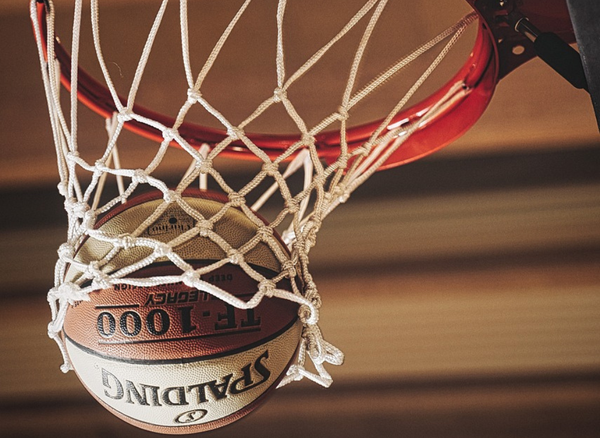Basketball, the sport where giants leap and nets swoosh, is not just about the players' heights or their fancy footwork. Oh no, it's also about that orange, bouncy sphere – the basketball. But have you ever stopped mid-cheer, a nacho halfway to your mouth, and pondered, "Just how much does that basketball weigh?" Well, buckle up, basketball fans, because we're about to dribble through the ins and outs of basketball weight in a way that'll make you the MVP of trivia night!
Regulation Basketball Weight
When it comes to the weight of a basketball, there's a standard that keeps the game fair and the shots swishy. A regulation basketball, as per the overlords of the game (also known as the International Basketball Federation, or FIBA), must weigh about 22 ounces (oz) or approximately 620 grams (g). That's the equivalent of balancing a small pineapple in your palm or, for the pet lovers, a chunky hamster.
But why this specific weight, you ask? It's all about the perfect equilibrium between being light enough to fly like an eagle and heavy enough not to get knocked off course by a player's sigh of disappointment. It's the sweet spot where physics meets finesse, and it's non-negotiable – unless you're playing with one of those plastic balls from the dollar store, but let's not go there.
Official Weight of the Pros
When it comes to professional basketball, the NBA size basketball is considered the standard for men's games. An NBA basketball typically weighs around 22 ounces (oz) or approximately 1.4 pounds (lbs).
For women's professional basketball associations, such as the WNBA, the official ball size is slightly smaller and lighter. A WNBA basketball weighs about 20 ounces, which is tailored to accommodate the generally smaller hand spans of female players. This difference in weight and size is also reflected in women's college and high school basketball leagues.
Circumference and Materials
Now, the weight of the basketball isn't just a number pulled out of a magician's hat. It's intricately linked to the size and materials of the ball.
This difference is like choosing between a large or medium pizza – both satisfying, but one gives you a bit more to handle.
The materials also play a part in the ball's weight. Leather, composite leather, or rubber – each has its own heft. Leather balls, the choice of pros, have a certain gravitas that says, "I'm here to play seriously and maybe become a vintage collector's item." Rubber balls, on the other hand, are the lightweight rebels of the court, often found on playgrounds and in school gyms, bouncing with youthful exuberance.
Weight Impact on Play
The weight of the basketball isn't just for show; it's a critical factor in the feel of the game. A heavier ball requires more muscle to maneuver, making it a workout worthy of a Greek god. A lighter ball, meanwhile, might make you feel like you're shooting a balloon – fun at a party, but not so much when you're trying to score three-pointers.
Players develop a keen sense of the ball's weight, which allows them to judge the force needed for that perfect arc. Too heavy, and it's like throwing a turkey; too light, and it's like tossing a tissue. The regulation weight ensures that players can achieve that satisfying "swish" without feeling like they're heaving a shot put or flicking a feather.
Materials and Their Impact on Weight
Basketballs are made from different materials, which can affect their weight. Rubber basketballs are often lighter and used primarily for outdoor play or in junior basketball leagues. Composite leather and synthetic leather basketballs, which are used in the NBA and other professional leagues, tend to be heavier and are designed for indoor use.
Composite leather balls, for example, offer a balance between grip and weight, making them the perfect basketball for many players.
Evolution of the Basketball
Believe it or not, basketballs weren't always the well-rounded, evenly weighted objects of athletic desire we know today. The first basketballs were more like mischievous gremlins, made from whatever materials were lying around, and they probably bounced with all the predictability of a rabbit on a sugar rush.
Over time, the basketball evolved, with the weight becoming standardized to ensure consistency in the game. This evolution was crucial – imagine showing up to a game and finding out you're playing with a ball that's as heavy as a bowling ball or as light as a beach ball. Chaos would ensue, and not the fun kind.
External Factors
External factors like temperature and altitude can mess with a basketball's weight and pressure, much like how a perfectly good hair day can be ruined by humidity. In colder environments, the ball can feel heavier and less bouncy, as if it's been filled with the tears of fans watching their team lose. In higher altitudes, the ball might become more buoyant, like it's trying to escape to a place where missed shots are forgiven.
Players need to adjust their game to these weighty changes, which is why you'll often see them practicing in different conditions. It's like preparing for a performance on "Dancing with the Stars" – you have to be ready for anything, including a surprise tango with a basketball that's feeling a bit bloated.
Junior Basketball Weights
For the young ballers, the basketball weight is dialed down to avoid turning a fun game into an episode of "World's Strongest Kid." Junior basketballs are lighter and smaller, ensuring that the kids aren't heaving the ball as if it's a sack of potatoes.
This consideration helps young players develop their skills without straining their developing muscles. It's about making the game accessible and enjoyable, not about testing whether they've been secretly bench-pressing their textbooks.
Weight vs. Air Pressure
The weight of the basketball is one half of the dynamic duo that determines its bounce; the other half is air pressure. The two have a "Tom and Jerry" relationship – they can't live with or without each other.
If the air pressure is too low, even a perfectly weighted ball will thud against the court like a tired jogger on a hot day. Too high, and it'll bounce uncontrollably, like a hyperactive puppy. The regulation weight ensures that, with the right air pressure, the ball has just the right amount of bounce to make the game dynamic and engaging.
Importance of Air Pressure
A properly inflated ball should have an air pressure of about 7.5 to 8.5 psi. This range ensures that the ball bounces correctly and maintains a consistent weight during play.
Using a pressure gauge, players and officials can check if a ball has extra air or is underinflated. An underinflated basketball may weigh less and not bounce as expected, which can affect the flow of the game. Conversely, too much air can make the ball harder and potentially unsafe.
Global Basketball Standards
Around the world, the weight of the basketball remains consistent, creating a universal language of bounce and flight. Whether you're playing in the sun-kissed courts of Spain or the icy arenas of Russia, the ball weighs the same, uniting players in a global fellowship of hoops.
This consistency is crucial for international competitions, where players from different corners of the earth come together to showcase their skills. The uniform weight ensures that no one's at a disadvantage because their home country prefers basketballs that mimic lead balloons.
Basketball FAQs
We hope with our Frequently Asked Questions section on basketball, we can provide you with added information you need.
What is the official weight of a regulation basketball?
A regulation basketball weighs about 22 ounces (620 grams), which is the standard for professional and international play.
Does the weight of a basketball affect how it's played?
Absolutely! The weight impacts how much force players need to use to dribble, pass, and shoot the ball. It's a delicate balance that affects the precision and feel of the game.
Are there different weights for basketballs used in youth leagues?
Yes, basketballs for youth leagues are generally lighter and smaller to accommodate the younger players' size and strength, ensuring the game remains safe and enjoyable for them.
What is the standard weight for an NBA basketball?
The standard weight for an NBA basketball is approximately 22 ounces (oz), or about 1.4 pounds (lbs).
How does air pressure affect the weight of a basketball?
Air pressure, measured in pounds per square inch (psi), affects the weight and performance of a basketball. A properly inflated basketball should have a pressure of 7.5 to 8.5 psi, ensuring it bounces correctly and maintains a consistent weight.
Are basketballs the same size and weight across all leagues?
No, basketballs vary in size and weight across different leagues and age groups. Professional men's basketballs, like those used in the NBA, are heavier than women's basketballs, and youth basketballs are lighter and smaller to accommodate younger players' needs.
Summary
In the realm of basketball, the weight of the ball is a pivotal aspect that influences the game's dynamics, player performance, and the overall enjoyment of the sport. Understanding the weight of a basketball is more than just knowing a number; it's about recognizing the importance of standardization across different leagues and ensuring that the game is accessible and enjoyable for all. Whether it's for an NBA basketball, WNBA basketball, or youth sizes, the right weight contributes to the integrity of the sport.
Happy shooting!









